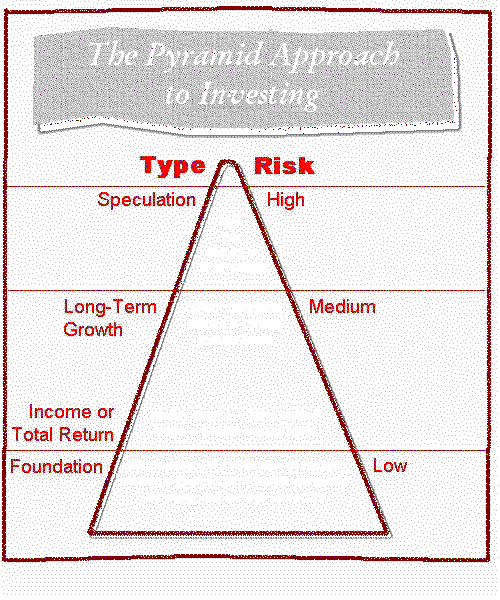When I was younger, the plan for my future was pretty straightforward. You go to high school to learn, get good grades, and get into a good college. You go to college to get good grades and then get a good job. After that, just circle the mouse wheel until retirement. OK, that last part about the wheel was my own addition but that basically was my “job” as a kid. That plan worked for me and it’s the path many people have walked with great success, but it’s not the only path.
With the government looking at additional regulation on the for-profit colleges, I started to wonder again whether college is “worth it.” In general, it is. However, recently with all these for-profit schools, a lot of people are going to college unnecessarily. They’re being promised things that the schools can’t deliver. They’re being sold something they don’t need, depending on what they want to do, and they’re only buying it because we’ve put “college” on a pedestal. In this Devil’s Advocate post, I explain why you might want to skip college.
Most Colleges Don’t Teach Skill Trades
Colleges are good at teaching things best learned in a classroom or a laboratory. Philosophy, chemistry, physics, mathematics, psychology, and such. They are not as good at teaching skill trades like being a mechanic or a welder or a fisherman. For skill trades, you are better off going the route of an apprenticeship or a vocational school that specializes in that skill trade.
If you go to college and get a degree in business only to graduate and become a fisherman, you’re wasting your money. That’s not to say a degree in business is bad for someone who is a car mechanic, but you don’t need to spend all that money and four years in a classroom when all the skills you need to learn are best learned hands on in a shop. A fisherman should, if he or she chooses to, go back to school for a business degree if it makes sense. But he or she should not go simply because everyone says he or she should go.
Not Everyone Finishes College
This entire post was inspired by this article in the New York Times that is advocating that some people skip college. One of the scariest bits of information they shared was a projection from the Department of Education. “Perhaps no more than half of those who began a four-year bachelor’s degree program in the fall of 2006 will get that degree within six years…”
Let’s say 50% of people complete the program within 6 years, that means 50% of people don’t finish and are paying for something that they won’t ever receive. That also means that a percentage of the people who do finish will be overpaying, since it will take them longer than the stated four years. What’s amazing about that statistic is that it screams one pivotal idea – not everyone is suited for college.
The problem is you can’t expect kids to know this because they haven’t been to college. They haven’t charted out their futures. That’s why you really need to rely on an honest and capable high school guidance counselor to help you decide what you should actually do.
Opportunity Cost of 4 Years
The average cost of college in 2009-2010 is $26,273 a year for a private college, $7,020 for a public college according. That means over four years you’ll have spent over $100,000 at a private school and $28,000 at a public school. When you consider the opportunity cost of not working for four years, coupled with the $100k/$28k actual cost, a college graduate is very much deep in the financial hole. Now imagine the value today!
According to data from U.S. Census Bureau, the average high school graduate makes $30,400 a year. The average bachelor’s degree makes $52,200. How long does it take for the college graduate to catch up considering they’ve paid $100,000+ and haven’t been pulling a salary for four years (totaling $121,200). It takes a long time.
You Can’t Afford It
Student loan debt figures are at all time highs. Why is it socially acceptable to tell people “you can’t afford that Maserati” or “you can’t buy a 10 bedroom home” when they can’t, but not OK to say the same about college? Why is credit card debt so bad when student loan debt is good? People are graduating with a hundred thousand dollar student loan debts, which can’t be discharged in bankruptcy, and saddling themselves with multi-hundred dollar loan payments.
You should not go to college if you cannot afford it. This would be different if we weren’t surrounded by horror stories of student loan debt. These are stories of graduates who can’t find jobs and must meet a small mortgage payment each month. You hear about a philosophy major with $50,000 in debt and no job prospects. The reality is that they shouldn’t have gone to that school to pursue that major… it wasn’t worth it and they couldn’t afford it.
If you’re choosing a major that has a low starting and low career pay, you will spend the next 30 years paying off loans. The only way how people I know pay off loans for education or social work degrees is through government assistance programs that forgive a certain portion for every year of “service.” It sucks, but it’s true.
You Don’t Want To
Remember when you were a kid and your parents told you to eat your vegetables? You probably fought them but you eventually ate them. You did it because your parents knew what was good for you and you, as a kid, didn’t. Perhaps they’re doing the same thing with college, telling you to go because it’s the right thing to do. They want you to go to college because it does, in many cases, give you an advantage in the workforce. They want you to go because they can tell their friends that you are going to college. But you should only go if you feel like that’s the best option for you.
You shouldn’t go to college because your parents want you to, or because your guidance counselor wants you to, or because your best friend is going and you want to be with him or her. You should go, and put yourself on the hook for tens or hundreds of thousands of dollars, if it’s the right decision for you.
(Photo: walkadog)





